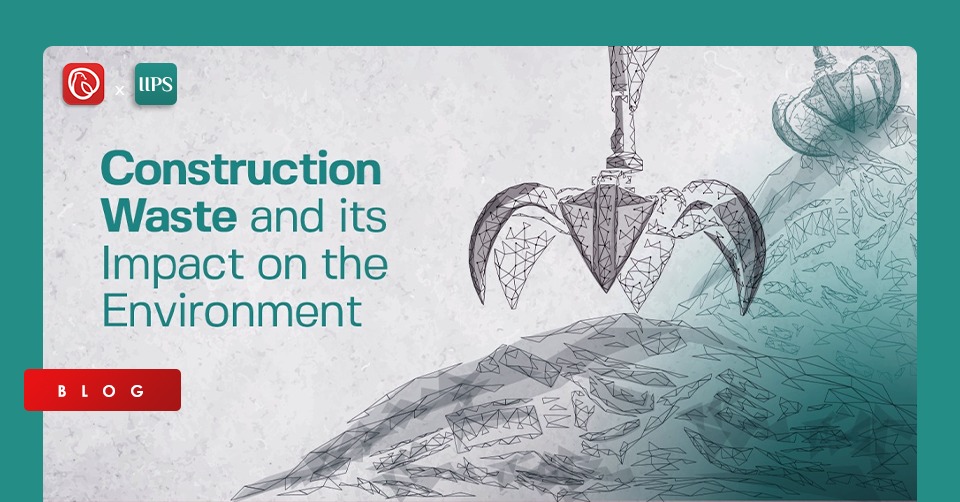Introduction
As the world adopts greater sustainability standards to tackle climate change, the issue of construction and demolition waste becomes an essential topic in the real estate sector. Construction waste’s socio-economic and environmental impacts can have significant considerations for human health, safety, and quality of life. Despite having precise calculations for project costs and an estimated quantity of materials required, construction material is always left behind, producing construction waste. Increased urban infrastructure developments can become a source of degradation of the environment and biological ecosystems. The construction and demolition waste generated due to these developments require a considerable amount of money for recycling, reusing, and disposal. Most of the landfills in Pakistan are filled with solid waste generated from the construction sector. Therefore, this material must be reused and recycled sustainably to protect the surrounding environment.
This swift research article by the Iqbal Institute of Policy Studies discusses the impact of construction waste on the environment and how a sustainable model can be achieved for recycling and reuse.
Understanding Construction Waste
Waste production is a natural outcome of material consumption. However, poor handling of materials, inadequate storage and protection, over-ordering of materials, poor site control, lack of training, lousy stock control, and damage to materials during delivery are some of the leading causes of excessive waste generation and inefficiency in construction projects. Moreover, reasons and sources of waste are a faulty design, poor material handling, lack of planning, inappropriate procurement, mishandling and other processes. Labour attitude and behaviour is another important aspect that can influence the amount of construction material wasted during use and application. A study has found that lack of experience and inadequate planning mistakes in the design, and frequent design changes are significant reasons for the generation of construction waste. Likewise, multiple stakeholders such as vendors, developers, architects, owners, designers, and contractors also influence waste generation in their capacities.
No matter how well planned a construction project is, there is bound to be a wastage of construction materials during development. There are multiple ways to categorise construction waste; however, it can be divided into three main categories: inert, non-inert, and hazardous. The first category includes soil, sand, rocks, concrete, aggregates, plaster, bricks, masonry blocks, glass, and tiles. The second category includes wood, paper, drywall, gypsum, metals, plastic, cardboard, and packaging. In contrast, the last category includes flammable materials like paints and corrosive materials like acids, bases, and explosives. A study conducted on 30 construction sites revealed that concrete (12.32%), metal (9.62%), brick (6.54%), plastic (0.43%), wood (69.10%) and others (2%) are some of the significant categories of waste generated during construction (Iqbal & Baig, 2016). In another study, concrete was estimated to be the most significant cost important part of construction waste (Park et al., 2020).
How much construction waste is produced in Pakistan?
The quantity and composition of construction waste keep on changing due to the dynamic nature of construction activities. This makes the exact measurement of varying construction waste products a difficult task. However, various efforts to determine the amount of waste generated during different construction projects and phases have yielded insights into how much construction waste is generated in Pakistan. Considering global standards, construction waste accounts for a substantial share of 25 to 30 per cent of the total solid waste generated worldwide. It takes 10 to 30 per cent of all trash in landfill sites. Construction processes in the European Union contribute to 33 per cent of total waste generation, while approximately 136 million tonnes of construction waste are generated in the US each year. In the UK, 70 million tonnes of construction waste are generated each year, with China having a staggering 40 per cent share of construction waste in total solid waste generation. Other studies have also shown that in countries like Hong Kong, Australia, and Germany, construction waste in proportion to complete solid waste generated is around 25 to 30 per cent.
In Pakistan, as much as 30 per cent of the total solid waste generated comprises construction and demolition waste. In contrast, construction materials wastage accounted for 9.8 per cent at construction sites in Punjab (Iqbal & Baig, 2016). Therefore, considering that Pakistan generates 48.5 million tonnes of solid waste every year, which is also increasing by 2 per cent per annum, construction waste stands at around 14 million tonnes per annum (ITA, 2019). The Government of Pakistan (GOP) estimates that 87,000 tons of solid waste are generated per day all over Pakistan, mostly from major metropolitan areas. Karachi, Pakistan’s largest city, generates more than 13,500 tons of municipal waste daily.
Impact of Construction Waste on the Environment
There are many significant impacts on the environment, from mining processes used to extract raw materials to the waste produced during a construction project and how it is disposed of. It is essential to understand these impacts and take initiatives to reduce the effect of construction processes on the environment. The construction sector is responsible for the demolition of many buildings and the establishment of new infrastructure. And while most of the waste generated during the construction process is recyclable and reusable, it usually ends up in landfill sites. While it is easier for construction companies to dump their waste in landfill sites, the practice can significantly negatively impact the environment. Landfill sites emit methane which pollutes the air and exacerbates the greenhouse effect. Dumping flammable and toxic materials such as paint, varnishes, and other chemicals into landfills can also lead to the seepage of harmful materials into the soil. The seepage can also travel to groundwater reserves and pollute waterways, destroying the ecosystems connected to freshwater supplies.
Demolition of buildings can also introduce a variety of pollutants to the environment. Wind often carries loose dust and debris hundreds of miles away, and depending on what the dust is composed of, it can have many adverse effects on public health. While emissions generated from transport, burning of crops, and power generation plants are blamed for air pollution and damaging the environment, there seems to be considerably less focus on the environmental impacts of construction waste. According to many studies conducted around construction sites, the development and demolition of buildings generate vast amounts of coarse pollutants that are strongly linked to heart disease. Construction sites also produce hazardous waste such as mercury, lead, aerosol cans, and other toxic substances. The environmental impacts caused by landfilling of construction and demolition waste is estimated to increase by 20.2% by 2025. However, if a 50% recycling and reuse rate can be achieved by 2025, the environmental impact will reduce by 33.2% (Maha & Fujiwaraa, 2018).





That’s a very unique perspective